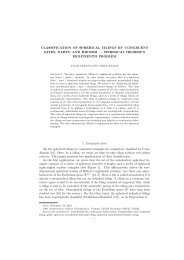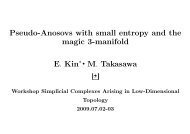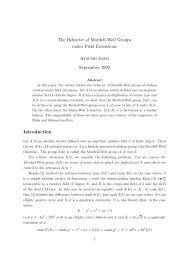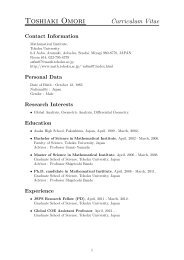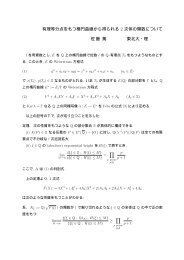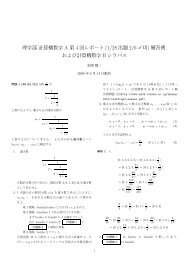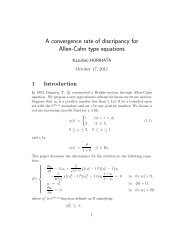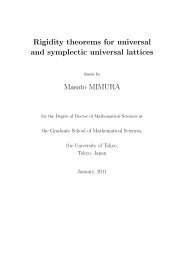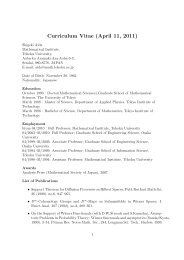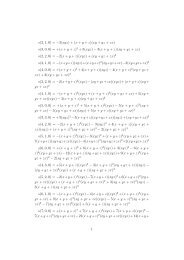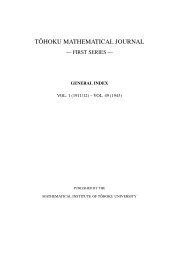Constructions of harmonic maps between Hadamard manifolds
Constructions of harmonic maps between Hadamard manifolds
Constructions of harmonic maps between Hadamard manifolds
You also want an ePaper? Increase the reach of your titles
YUMPU automatically turns print PDFs into web optimized ePapers that Google loves.
80 CHAPTER 4. NON-EXISTENCE OF PROPER HARMONIC MAPS<br />
It is then easy to see that u is explicitly given by<br />
u(z 1 ,z 2 )=<br />
1<br />
(1 −|z| 2 +2|1 − z 2 | 2 ) 2 +8(I(z 2 )) 2<br />
× (−8 √ 2|1 − z 2 | 2 I(z 2 ), (1 −|z| 2 ) 2 − 4|1 − z 2 | 4 +8(I(z 2 )) 2 ),<br />
where z =(z 1 ,z 2 ). Now, by a long but straightforward calculation, we can verify that u has<br />
the following properties:<br />
(1) u(0, 1) = (0, 1).<br />
(2) u is Lipschitz continuous at (0, 1).<br />
(3) u is not C 1 at (0, 1).<br />
(4) u is not a constant map at the ideal boundary.<br />
Therefore the C 1 -regularity up to the ideal boundary is an optimal condition for our theorem.<br />
Now, we prove that u satisfies the properties mentioned above. Since the boundary map<br />
<strong>of</strong> ũ : CH 2 → RH 2 is given by ũ(0,η,ξ,x)=(0, 2 √ 2x), it is clear that u : B 2 → D 2 is not<br />
a constant map at the ideal boundary. Also it is easily verified that<br />
(1 −|z| 2 +2|1 − z 2 | 2 ) 2 +8(Iz 2 ) 2 =0, |z| ≤1 ⇐⇒ z 1 =0,z 2 =1.<br />
Claim 1.<br />
Let<br />
lim u(z 1 ,z 2 )=(0, 1).<br />
(z 1 ,z 2 )→(0,1)<br />
z 1 = r(θ 1 + √ −1θ 2 ), z 2 =1+r(θ 3 + √ −1θ 4 ),<br />
where (θ 1 ) 2 +(θ 2 ) 2 +(θ 3 ) 2 +(θ 4 ) 2 =1. Note that<br />
(z 1 ,z 2 ) ≠(0, 1) ⇐⇒ |θ| 2 := (θ 3 ) 2 +(θ 4 ) 2 ≠0.<br />
Then it is easy to see that<br />
1 −|z| 2 = −r(2θ 3 + r), and |1 − z 2 | 2 = r 2 |θ| 2 .



